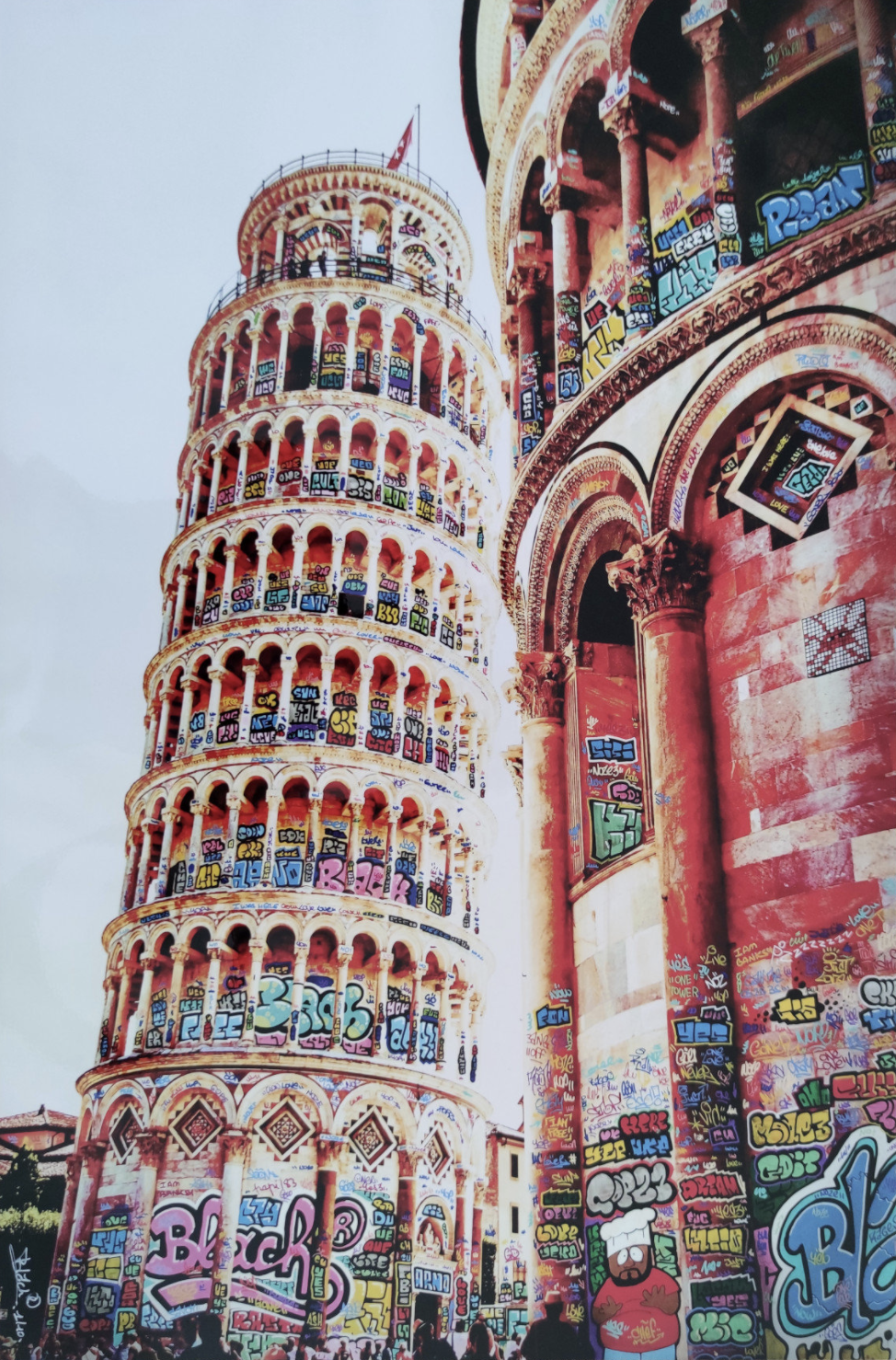Pop Art
Origins of Pop Art
Pop art emerged in Britain during the mid 1950s, and spread to the United States as it grew into a phenomenon throughout the 60s.
Art school students created pop art to challenge conventional art, which they felt was disassociated with everyday life.
Instead of shaming material culture, pop art recognizes the impact that commercial goods have on society, hence famous works such as Andy Warhol’s Campbell’s Soup Cans.
The post-war environments of Britain and the US, whose citizens were consuming commercial goods and mass media in troves, were primed to fall in love with the pop art aesthetic and message.
Like any artistic movement, there isn’t any defining moment that starts the phase, but instead a collection of moments that, in retrospect, can define an era.
The term “pop art” wasn’t coined until around 1954, and even so, the accreditation is loosely attributed to Frank Cordell.
That being said, the first work of art that’s said to have inspired the movement was Eduardo Paolozzi’s Rich Man’s Plaything in 1947.
In fact, that work even includes the word ‘pop’ in it - though ‘pop’ is usually used as an abbreviation of ‘popular’.
In 1952, a group of artists known as “The Independent Group” forms in London. Many of the artists in the Independent Group are credited as being the founders of pop art as we know it.
Key Characteristics of Pop Art
The characteristics of pop art were outlined by pop artist Richard Hamilton, in a letter to his architect friends:
“Pop Art is: Popular (designed for a mass audience), Transient (short-term solution), Expendable (easily forgotten), Low cost, Mass produced, Young (aimed at youth), Witty, Sexy, Gimmicky, Glamorous, Big Business.”
In addition to that description, pop art works typically have the following:
- Bright colors and colorations
- Use of pop culture icons, such as actors/actresses or cartoon characters
- Comic books/newspaper aesthetic
In general, pop art was iconoclast in nature, as it spurred from a disdain of ‘high art’.
In fact, pop art stems from Dada, which was a movement against contemporary Parisian art.
(Pop)ular Artists
The new mass-media focused art category quickly spread to the United States, where commercialism and celebrity reign supreme. With the attention pop art was getting, some key artists came into the spotlight.
Roy Lichtenstein
Roy Fox Lichetenstein, a New York City native, showed artistic ability early in life. His passions were torn between painting and playing jazz, but ultimately he focused on painting.
Roy’s focus was unparalleled - after his initial pop art success in the early 60s, he made over 5,000 works of art which included everything from drawings to sculptures.
As one of the early successes of the Pop Art movement, Roy Lichtenstein was also a prime target for critics of the genre.
Lichtenstein’s critics claimed that his work was unoriginal and without depth. Naysayers of the Pop Art movement despised the comic-book print style and heavy use of brands, logos, and characters.
Nonetheless, Lichenstein’s legacy is centered around his contributions to pop art.
Andy Warhol
Perhaps the poster child of American pop art, Andy Warhol famously appropriated consumer culture, mass media, and celebrities to create iconic imagery.
Most known for his silkscreen prints, Warhol’s first pop art piece was Coca-Cola which was sketched and hand painted. Warhol’s Coca-Cola was created in 1961, and was the first of many famous pieces by the artist.
Once introduced to silkscreen printing, which enabled Warhol to mass-produce his works, his fame took flight.
Warhol’s preferred printing method matched the themes of his work - mass production and recognizably imagery, such as celebrities or products.
The Campbell’s Soup Can work was inspired by Warhol’s lunch habits, where he claims to have had “the same lunch every day, for 20 years…”.
Warhol has a prolific career that garnered the attention of celebrities (of which he had an obsession with since childhood) and media alike.
Having worked on films, modeled in fashion shows, and appeared on late-night TV shows, Warhols in undoubtable most known for his contributions to pop art.
Jasper Jones
Jones broke into the scene slightly earlier than Lichentstein or Warhol, despite having no real exposure to art in his rural South Carolina upbringing.
Avoiding direct representation or slight abstraction, Jones focused his works on things people already knew, such as flags, symbols, and signs.
Straying from non-objective painting, Jones’ first major work Flag (1954) depicted the American Flag, but was composed on newspaper shreddings.
The shredded newspaper approach was used in a multitude of his works, which lead to a blurring of the line between fine art and mass produced commercialism.
Summary
Using celebrity, common household items, and recognizable symbols, artists gave everyday images a pulse that resonated with the general public.

